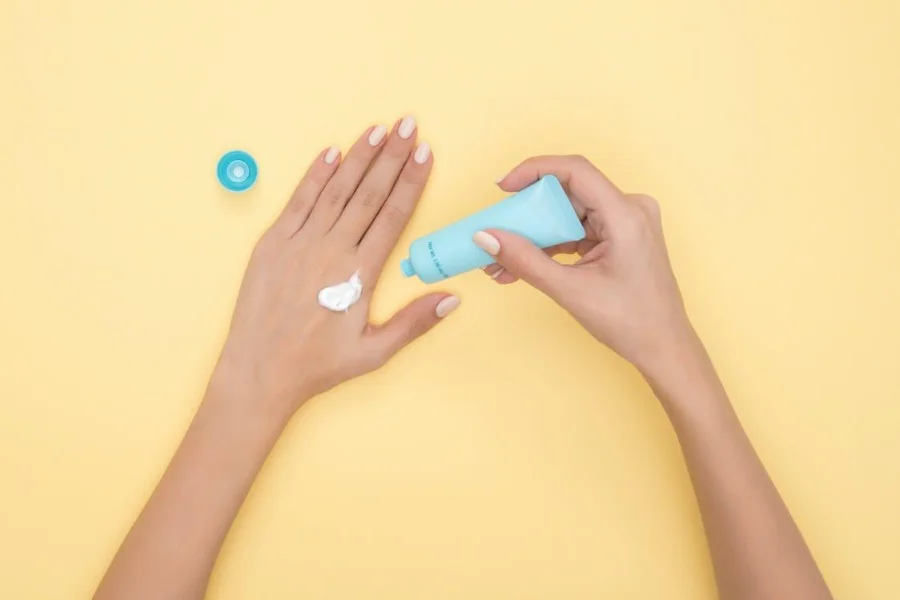In recent years, a growing number of consumers are suffering from skin sensitivity across the world. The rise in skin sensitivity issues is due to the misuse of super-strength products and modern stressors.
Alternative active ingredients have become popular due to increased skin sensitivity cases. These products seek to address consumer concerns but with no irritation. With 71% of adults having sensitive skin, according to Aveeno, gentle alt-actives are poised to dominate the skincare industry.
Table of Contents
Skincare market overview
Gentle alt-actives
Final thoughts
Skincare market overview
According to Globe News Wire, the global skincare market is expected to hit USD 145.82 billion by 2028. It will grow at a compound annual growth rate (CAGR) of 5.52%.
The market is experiencing segmentation due to the demand for new formulations as skin sensitivity cases increase globally. According to Statista, the anti-aging skincare market in the U.S is projected to grow substantially between 2020-2026.
Gentle alt-actives
Antioxidant actives: plant-based glow-givers

Plant-based antioxidants are nature’s gift for skincare formulations. These powerful actives help protect the skin from damaging free radicals, pollution, and UV rays, preventing premature aging and improving overall skin health.
Plant-based glow-givers are on the ongoing rise with the “no make-up make-up” trend that sees the sustained demand for skincare seeking to achieve a healthy glow. Rich in antioxidants, plant-based ingredients are increasingly becoming a popular alternative to vitamin C.
The trend is capitalizing on Western interest in Eastern medicine to create ayurvedic ingredients that boost appeal. French manufacturer Seppic launched TALADVANCE, a new centella asiatic ingredient sourced sustainably from Madagascar, Africa.
One of the most common examples is Chebula, a brightening ingredient that contains cream, sunscreen, and serum. Centella asiatica has similar roots in Ayurveda and is popular among users due to its high antioxidant properties.
Businesses should leverage the increasing demand for antioxidant actives by creating products focusing on overall skincare effects without the need for super-strength topical ingredients. Including antioxidant-rich ingredients in your products can help boost their effectiveness and provide a natural glow to the skin.
By incorporating plant-based glow-givers into your skincare line, you can differentiate your products from competitors and offer your customers a unique and effective solution for their skincare needs.
Anti-ageing alternatives: the natural retinols
Traditional retinol is a highly irritating ingredient for sensitive skin and cannot be used by pregnant people as it causes sun sensitivities. Growing demand for plant-based alt-retinol is driving sustainable options to the fore.
As consumers become more conscious of the potential side effects of synthetic anti-aging ingredients, the demand for natural and safer alternatives is on the rise. One such alternative is natural retinols, which provide similar benefits without the harshness often associated with synthetic retinoids.
Natural retinol is derived from plant sources such as bakuchiol, rosehip oil, and moth bean extract. They stimulate cell turnover, reduce fine lines and wrinkles, and improve skin texture and tone.
Incorporating natural retinol into your skincare formulations can offer your customers a safer and more sustainable alternative to synthetic retinoids. In addition, natural retinol is suitable for all skin types, including sensitive skin, making it a versatile ingredient in your product line.
Natural retinols such as bakuchiol have been under criticism due to the use of threatened plant species which creates a bad reputation. Forgotten waste and crops open up new opportunities to replace endangered plant species. BASF (Germany) Nephoria is a collagen-boosting active product of grown rambutan fruit, a byproduct of the food industry.
Skin soothers: hydrating heroes and gentle exfoliants

Hydrating heroes such as hyaluronic acid and glycerin help to hydrate and plump the skin, while gentle exfoliants like lactic acid and fruit enzymes can help to slough off dead skin cells, revealing a brighter, smoother complexion.
These skincare powerhouses work together to leave your skin feeling soft, supple, and rejuvenated. As the number of people with compromised skin types continues to rise, skin soothing natural hydrators, barrier-boosting ingredients, and exfoliators will emerge to address common skincare concerns.
LHAs and PHAs are becoming acids of choice for sensitive skin concerns with the ability to gently exfoliate without irritation unlike harsher BHAs and AHAs. Proven skin hydrator hyaluronic acid is not linked to skin sensitivity, and it helps in achieving increased penetration of other ingredients and topics inadvertently causing skin irritation.
Cassia flower seed is touted as a plant-based alternative source used by U.S clean skincare brands. Skin issues related to certain health factors are often what underlie a decrease in healthy skin, especially with regard to sensitive skin. Biotech gives rise to clean and gentle barrier-building ingredients. Evolved By Nature (US) Activated Silk 33B is made by extracting peptides from natural, renewably sourced silk, creating a unique polypeptide that supports a healthier looking skin barrier.
Final thoughts
Rising demand for sensitive skin solutions has sparked a growth in gentle alternatives to powerful active ingredients. Key ingredient trends include antioxidant actives, skin soothers, and anti-ageing alternatives.
Businesses can capitalize on these emerging trends and cater to the increased demand for gentle alternatives. Sustainability is a key concern especially in formulations that utilize endangered species. Luckily, there are alternatives, listed here, that help overcome the sustainability challenge.




